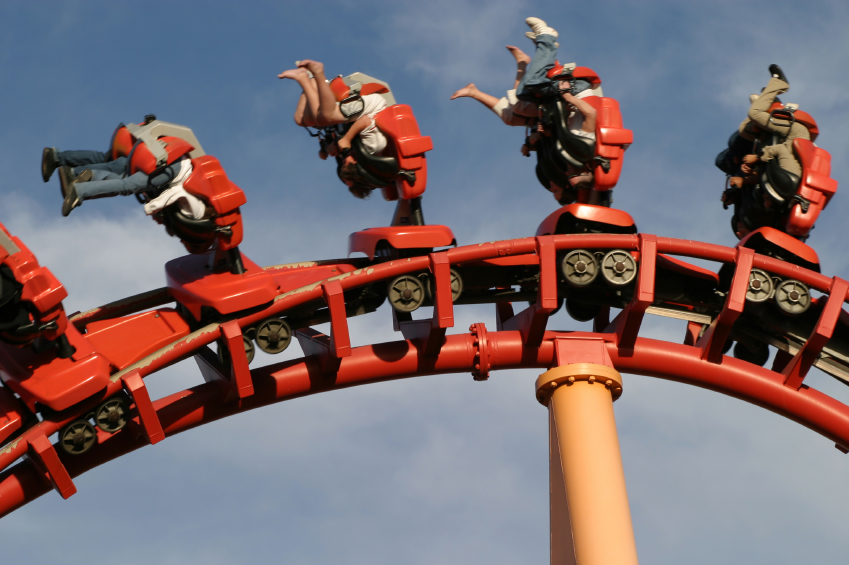 Theme parks are growing and so is attendance which provides a positive economic impact for the US
Theme parks are growing and so is attendance which provides a positive economic impact for the US
When people gather in line for the newest monster roller coaster or flock to an amusement park named after the latest superhero, few realize the enormous economic contribution theme parks make to the American economy.
It's encouraging. In this global battle for jobs, theme parks are one of this country's hot growth sectors.
And attendance is growing. In 2014, there were an estimated 300 million visitors to America's theme parks. That's a 4% increase over the prior year
This fervor for theme parks is creating a ton of economic activity. In fact, there are 17, count them, 17 new roller coasters alone that opened in the US this year.
According to the International Association of Amusement Parks and Attractions, there are about 400 amusement parks and attractions in the US. The industry employs about 600,000 people year-round.
What's really great is that considering America's huge trade deficit with foreign countries where we spend more with them than they spend with us, theme parks are actually bringing foreign dollars back to US soil.
Just look at the economic impact in one state. Take Florida, which is certainly THE worldwide leader when it comes to theme parks. And theme parks are a major reason why people come here.
The economic impact of theme parks in just one state
In case you lived in a cave this past century, Florida is theme park heaven. Here are the top theme parks in the Sunshine State and the number of annual visitors they attract:
- Magic Kingdom - 19.3 million
- Epcot -11.5 million
- Disney's Animal Kingdom - 10.4 million
- Disney Hollywood Studios - 10.3 million
- Universal Studios - 8.2 million
- Islands of Adventure at Universal Studios - 8.1 million
- SeaWorld - 4.7 million
- Busch Gardens Tamp Bay - 4.1 million
(Source: TEA/AECOM Theme and Musuem Index).
Now, think of the economic impact this has on the state and the country.
In 2014, according to VisitFlorida.com (one of the state's tourism websites), there were 97.3 million visitors to the state.
Of those, it is estimated that 11.5 million were from overseas, dropping their dollars into our pockets, thank you very much.
From Canada there were about 4.2 million visitors. Brazil follows with 1.7 million, then United Kingdom with 1.6 million. Nearly a million visitors also come from both Venezuela and Argentina each.
The state estimates tourism brings in a whopping $82 billion in spending.
That translates to $4.9 billion in tax revenue, money that otherwise Floridians would have to dish out of their own pockets for expenditures like roads, schools, police, etc. (That's one reason why Florida is one of the few states without a state income tax).
It's difficult to determine the number of foreign tourists who actually visit Florida theme parks. But if you've been to a Disney property or Universal Studios lately, you know they are there. You can see the foreign groups with their brightly colored shirts and tour guides. You can hear them at the outlet malls filling up suitcases with merchandise.
This influx of foreign money into the economy is certainly welcome.
The state Department of Economic Opportunity says that of the 9.1 million workers in Florida, 1.1 million of them hold jobs directly attributed to tourism. That's better than 1 in 10. Again, we would like to thank our friends from overseas.
That's certainly a job-creation engine if there ever was one. Now, some might argue that a tourist-related job is not as lucrative as a job in manufacturing. But in these difficult times, a job is a job. (By the way, the IAAA found in a recent survey that 28% of Americans said they would be interested in working for a theme park or an amusement company).
This economic activity does not just involve people taking tickets at the turnstiles either.
Think of all the construction jobs created building all those new roller coasters and improvements at theme parks. Plus all the hotels and restaurants built to accommodate those visitors.
What about all the construction materials that need to be manufactured? Then think of all the truck drivers and train engineers employed to deliver those goods.
There are other offshoots - commercial site amenities. When you build or expand a theme park, you need benches, trash receptacles, picnic tables, bollards, restroom equipment and supplies, etc., etc.
How about food and beverages? Think of the enormous amount of food that is required every day to feed all those millions of people. That's a lot of hamburgers, french fries, Cokes and ice cream cones.
Sure. Theme parks are now catching on around the world. They are growing quickly in Asia. But in many cases, it's American's companies such as Disney that are building them.
However, we doubt they will catch up with American theme parks. This is another field where Americans excel. We like to work hard…and we like to have fun. Theme park developers are obviously answering the call for faster roller coasters, bigger interactive rides and more awesome experiences.
Behind all those rides is an economic hot spot that is a supernova of growth for the American economy. Sure, some of these theme parks seem overcrowded. But for all the people they employ, the taxes they generate and the money they draw to this country, we should be grateful, even if we have to stand in line for a few minutes.
To see the traffic numbers for theme parks in the US and around the world click here.


